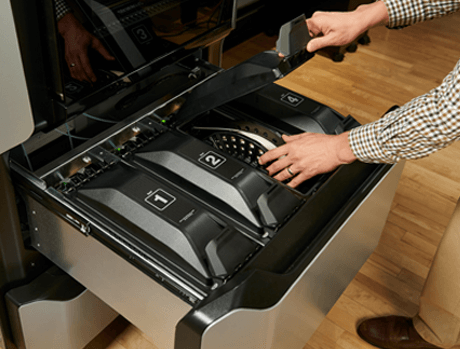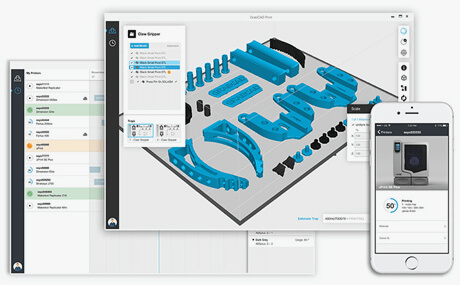ABS-CF10

The Stratasys F Series is your entire team's ultimate, all-in-one rapid prototyping system. It combines the power of FDM with the ease of GrabCAD Print for the most versatile and intelligent solution available.
The new Stratasys F Series is easy to operate and maintain for all experience levels. And, it's adept at every prototyping stage, from concept verification to design validation to functional performance.
The most commonly used CAD file formats can be imported directly into GrabCAD. The three printers in the platform, the Stratasys F170 and F370, support a broad range of capabilities and budgets for every prototyping stage.
Rapidly and cost-effectively iterate concept verification models in Fast-Draft Mode using PLA material that offers unbeatable cost savings at the professional level.
Validate the fit, form, and aesthetics of complex designs and assemblies with more accuracy than ever with the superior resolution and consistency of the F Series.
Test the functional performance of your prototypes in real-world conditions using a variety of robust thermoplastics, including ABS, ASA, and PC-ABS.

The Stratasys F Series lets you print everything from fast, low-cost concept models to durable assemblies. And the Stratasys F Series gives the option of up to four different materials, along with our easy-to-remove soluble support material.* Create complex parts and assemblies without compromising accuracy, detail, and repeatability. You can expect Stratasys' quality and dependability even for your earliest design iterations.
Parts are produced with an accuracy of +/- .200 mm (.008 in), or +/- .002 mm/mm (.002 in/in), whichever is greater.

GrabCAD Print software simplifies the entire 3D printing process with an intuitive CAD-like application anyone on your team can use. Features like detailed reporting and remote monitoring help you easily manage your print jobs from outside the office. Combined with the ability to share projects between users seamlessly, it all adds up to a more streamlined, efficient workflow.








